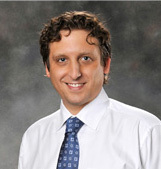RICHMOND, VA--(Marketwired - Jun 12, 2013) - Dr. Jan-Eric Esway, an orthopaedic surgeon in Richmond, seeks to inform his patients as much as possible before beginning a treatment plan so patients may make educated decisions about their care. "Informed consent" is an important component of Dr. Esway's practice, as he wants all of his patients to have a clear understanding of what will be happening before, during, and after treatment for an ankle sprain.
According to Dr. Esway, more than 23,000 people in the United States sprain an ankle every day. He notes that while many minor sprains will heal on their own within a week or two, more severe injuries will not heal properly without appropriate treatment. Some patients will experience persistent pain caused by the scar tissue created when their body attempts to heal the original injury. Symptoms of severe ankle injury can include:
- Persistent pain
- Persistent swelling
- Weakness of the ankle joint
In most cases, Dr. Esway says even severe ankle sprains will recover with nonoperative treatment methods, using a combination of bracing and physical therapy. But in cases where surgery becomes a medical necessity, he adds that recent advancements in technology now allow stronger repairs and faster recoveries with smaller incisions and less invasive techniques.
The Richmond orthopaedic surgeon notes that severe ankle sprains typically involve injury to the outer column ligament of the ankle. He says these ligaments, when stretched or torn, may not heal properly without medical attention, causing instability in the ankle joint. Dr. Esway also highlights that while there are many treatments for ankle instability, surgery is occasionally necessary as a last resort.
While traditional ankle surgery requires a relatively large incision and six to eight weeks of casting, Dr. Esway says the latest surgery techniques can actually replace the affected ligaments instead of tightening the damaged ones. He notes that this newer procedure, which is similar to ACL reconstruction in the knee, requires a smaller incision compared to traditional methods, has an abbreviated recovery time, and reduces the likelihood of re-injury. Arthroscopic ankle procedures, which utilize a small camera during surgery, have patients starting physical therapy as early as 10 days after surgery.
After surgery, Dr. Esway meets with his patients' families to discuss the details of the surgery, review post-operative instructions, and answer any questions. A physician assistant at his orthopaedic surgery practice will call patients the day after surgery to make sure no complications have arisen. Dr. Esway then typically sees patients in the office about 10 days afterward to ensure a successful healing process. If, in the meantime, a patient calls with a concern or problem after surgery, the patient can typically be seen within 24 hours.
About Jan-Eric Esway, MD
Dr. Jan-Eric Esway is a graduate of Harvard University and earned his medical degree at the University of Pittsburgh's School of Medicine. Afterward, he continued on at the University of Pittsburgh, completing a five-year residency in orthopaedic surgery. At his practice, Dr. Esway offers a wide range of orthopaedic treatments and procedures including foot surgery, ankle surgery, and sports medicine. He is available for interview upon request.
Contact Information:
Dr. Jan-Eric Esway
1115 Boulders Parkway
Suite 100
North Chesterfield, VA 23225
(858) 200-0044
www.rosemontmedia.com
